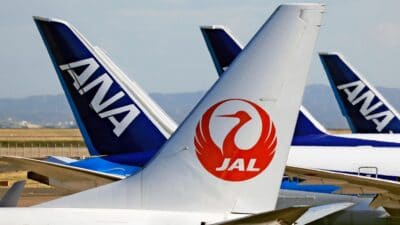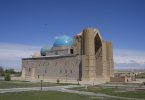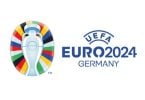Da Vinci’s Salvator Mundi at the Louvre Abu Dhabi is likely the result of a geopolitical mediation, involving Anglo-Saxon investment funds, financial firewalls and Mohammad Bin Salman (the Crown Prince of Saudi Arabia), who actually bridled the final price paid. The artwork is apparently being insured for around 700 million dollars.
In June 2017, Saudi Arabia and its allies, including the United Arab Emirates, broke off all diplomatic ties with Qatar, which in recents years has established itself as a leading force on the global art market via the Qatar Museum Authority (Sheikh Hamad Bin Khalifa Al Thani).
Meanwhile, in accordance with standard practice, the Vatican Museums (12 in total) extensively studied the Salvator Mundi opportunity and particularly how to interpret Da Vinci’s Christ iconography.
The series of differents communiqués on the subject by the different protagonists in the sale – each contradicting the previous one – suggests that the painting is theologically explosive, and it is clear that, in the end, the different protagonists preferred to avoid the topic, considering the theological “hotness” as potentially damaging to the success of the sale.
The Salvator Mundi painting may also offend Saudi sensibilities: human portraits and especially portraits of religious figures are forbidden under the strict Saudi brand of Islam, and this one raises particular issues because it depicts Jesus as “Savior of the World” (dixit The New York Times).
In the past, the Vatican Museums always had a clear right to examine, validate and, where appropriate, acquire historical artworks that played a significant role in the propagation of the Christian faith. Although this RC monopoly has gradually receded, it remains valid in the 21st century for all major work of art that depict the symbols of the Christian faith; and the Jesus Christ painted by Leonardo Da Vinci as “Savior of the World” is naturally one such representation.
Artprice can therefore confirm that the sale of the Da Vinci’s « Salvator Mundi » did indeed involve geo-political mediation as well as diplomatic management of its religious and theological implications. The final outcome, with the painting being exhibited at the Louvre in Abu Dhabi, is therefore the result of all these factors and the insured value of the artwork at 700 million dollars most likely corresponds perfectly to the painting’s value in a Museum Industry ® context.
For further information, read a 7 Dec. 2017 release https://www.actusnews.com/fr/ARTPRICE/cp/2017/12/07/news-of-da-vinci_s-salvator-mundi-being-exhibited-at-the-abu-dhabi-louvre-and-soon-at-the-paris-louvre-entirely-endorses
News of Da Vinci‘s Salvator Mundi being exhibited at the Abu Dhabi Louvre –and soon at the Paris Louvre– entirely endorses Artprice‘s Museum Industry®
Having provided an exclusive explanation of the sophisticated financial arrangements behind the recent acquisition of Leonardo Da Vinci’s Salvator Mundi –an explanation that was picked up by Agence France Presse today–, Artprice has highlighted a highly sophisticated economic model.
The arrangements for the acquisition of the Da Vinci masterpiece correspond perfectly to the Museum Industry® model that Artprice conceptualized in 2005 and has taught ever since.
According to thierry Ehrmann, All the of the world‘s major museums hold accounts with Artprice, including of course the Louvre. The United Arab Emirates, with its capital Abu Dhabi, is one of the top 10 most active countries accessing Artprice‘s databases…”
Here’s the deal: the Paris Louvre sells a “Louvre” franchise to Abu Dhabi until 2037. The latter pays a total of 400 million euros to the Paris Louvre for the right to use the Louvre name. The latter, accompanied by 13 French museums, convenants to lend artworks to Abu Dhabi – 10 museums have already lent more than 350 artworks.
These arrangements shows the Museum Industry® collaborating within a network, using investment vehicles and complex legal structures.
They unambiguously prove the emergence in the twenty-first century of a new economic sector – the Museum Industry® – exactly as Artprice described it back in 2005.
In short, we have a classic business model with inflows (ticketing and derivative income) and outflows – operating license costs plus acquisition costs… in this case, the price of Da Vinci’s Salvator Mundi, a price predicted by Artprice three months prior to its sale.
The 450 million dollars paid for the painting is the result of an intelligent investment decision based on the Louvre museum’s annual operating income (ebitda) and not on some wild extravagance. Those who believe it is the latter have failed to understand that the Museum Industry® is now the principal structure of the global art market.
This structure is driving art prices up by creating scarcity on the three principal segments of the Art Market: Old Masters, Modern Art and Contemporary Art, and we see that within this industry configuration, the resale of a “major tangible asset” can have an immediate impact on ticket revenue.
Artprice – which will be launching its own museum ranking index (Artmuseum100®) in early 2018 – highlights the transformation of museums, whose clientele has grown tenfold in the last 30 years.
Artprice and its econometrics department has been collaborating with Twitter for two years on a giant sample of 39 million identified followers with links to the world’s 100 principal Fine Art museums.
According to thierry Ehrmann, This massive expansion of the global Museum Industry® goes hand-in-hand with a major soft-power competition between the world’s nations, particularly its major powers (China / US) and the Gulf States. Indeed, soft-power rivalry is leading the art market inexorably towards spectacular new auction results. In our well-documented view, we are likely to see results around the billion dollar threshold by 2020.
As the world leader in Art Market information, Artprice can only benefit from this growth of the Art Market, driven essentially by the increasing power of the Museum Industry.























